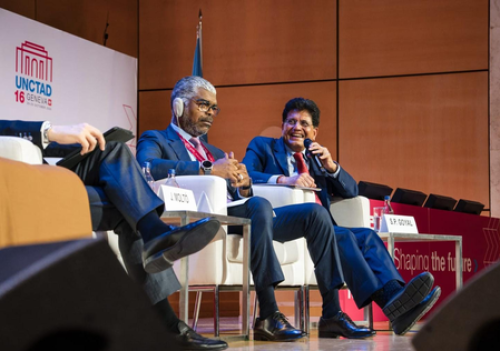Pew Research
The Indian American community has emerged as the second-largest Asian origin group in the United States, with an estimated population of 5.2 million as of 2023. According to a Pew Research Center analysis of U.S. Census Bureau data, Indian Americans now comprise approximately 21 percent of the Asian American population, trailing only Chinese Americans, who number 5.5 million.
This marks a remarkable 174 percent increase since 2000, when the Indian American population was about 1.8 million. The growth is driven by both sustained immigration and natural population increases. In 2023, immigrants accounted for 66 percent of the Indian American population—down from 73 percent in 2000—yet their numbers more than doubled, rising from 1.3 million to 3.2 million. Among these immigrants, 60 percent have lived in the United States for over a decade, and 51 percent have become naturalized citizens.
Geographically, Indian Americans are concentrated in several key states, with California leading at 960,000 residents, or 20 percent of the national total. Other states with significant Indian populations include Texas (570,000), New Jersey (440,000), New York (390,000), and Illinois (270,000). Major metropolitan areas such as New York City, Dallas, and San Francisco are prominent hubs for this demographic -- New York (710,000), Dallas (270,000) and San Francisco (260,000) metro areas.
The community is characterized by high levels of education and economic achievement. In 2023, 77 percent of Indian Americans aged 25 and older held at least a bachelor’s degree, significantly higher than the 56 percent among Asian Americans overall. Notably, both U.S.-born and immigrant Indian Americans show similar rates of higher education attainment. Median household income for Indian-headed households reached $151,200, compared to $105,600 for Asian households generally. Indian immigrants had a higher median income than their U.S.-born counterparts—$156,000 versus $120,200. Additionally, median personal earnings for Indian Americans aged 16 and older were $85,300, far above the Asian American average of $52,400. Full-time, year-round Indian workers earned a median of $106,400, compared to $75,000 for Asian workers overall.
Homeownership among Indian-headed households stands at 62 percent, matching the rate for all Asian-headed households. Immigrant Indian households have a slightly higher homeownership rate (63 percent) compared to U.S.-born households (54 percent). Despite their economic success, only 6 percent of Indian Americans live in poverty, a rate lower than the 10 percent observed among Asian Americans overall.
Linguistically, Indian Americans are notably proficient in English. Eighty-four percent of those aged five and older report speaking English well, including 28 percent who speak only English at home. Among immigrants, 79 percent report English proficiency, while 96 percent of U.S.-born Indian Americans do. Hindi is the most widely spoken language at home (18 percent), followed by Telugu (11 percent), Gujarati (10 percent), and Tamil (7 percent).
The religious composition of the community is equally diverse. Hinduism is the most common affiliation, with 48 percent of Indian American adults identifying as Hindu. Christianity accounts for 15 percent, and another 15 percent are religiously unaffiliated, identifying as atheist, agnostic, or having no particular religion.
Demographically, the Indian American population skews relatively young. The median age is 34.2 years, aligning closely with the broader Asian American median of 34.7. Among Indian immigrants, the median age is 40.9, while the U.S.-born segment is considerably younger, with a median age of 13.4. Nearly 60 percent of U.S.-born Indian Americans are under 18. Fertility rates among Indian women are comparable to the Asian average, with 6 percent giving birth in the 12 months prior to the survey.
Marital trends also reflect strong family structures within the community, as 70 percent of Indian adults are married, compared to 58 percent among Asian Americans overall. Immigrant Indians are more likely to be married (77 percent) than their U.S.-born counterparts (35 percent).
Overall, the rapid growth and evolving characteristics of the Indian American population are reshaping the cultural, economic, and political fabric of the United States, underscoring their growing influence across various sectors of society.
The following individuals provided research and editorial guidance: Mark Hugo Lopez, director of race and ethnicity research; Jens Manuel Krogstad, senior writer and editor; Sahana Mukherjee, associate director of race and ethnicity research; Jeffrey S. Passel, senior demographer; Neil G. Ruiz, head of new research initiatives; and Ziyao Tian, research associate. Research Assistants Alexandra Cahn and Gracie Martinez and Research Associates Luis Noe-Bustamante, Khadijah Edwards and Tian provided research support.












